Piemonte 2025 Harvest Report
Once again, I have the pleasure of reporting directly from the beautiful hills of the Langhe, and offering you front-row insight into the harvest and early predictions for the 2025 vintage in Barolo and Barbaresco.
Since early May, I’ve been based in the Barolo municipality of La Morra. I'm a Nebbiolo girl my heart and thus nothing is more fun that following the growing season from its very first shoots.
I’ve spent countless hours in the vineyards, witnessing this year’s challenges up close, been harvesting alongside different producers, and become familiar with their thoughts and expectations of the vintage.
And now, it's with great excitement that I finally get to share all the insights with you. So without further ado, I present you this year’s harvest report. Happy reading!
Written by Olivia Hviid Topp
Sommelier & Content Manager
The growing season
Last year, I began our 2024 harvest report with: “Slightly later than usual, the harvest has finally been brought in across the 11 Barolo and 4 Barbaresco communes.” At that point, the calendar had already passed mid-October, and producers’ patience was wearing thin after a long, wet season.
Fortunately, the energy is quite different in 2025. Despite a wet start to the spring, rain-related challenges have been significantly fewer this year.
The growing season began and ended notably earlier compared to previous vintages. In fact, the last wineries in both Barolo and Barbaresco were calling “finito” during the first days of October — while most hadn’t even begun picking at that point last year.
This earlier harvest has actually been a common theme across many parts of Europe in 2025. Not only in Piemonte, but also in regions like Champagne and Burgundy (as you may have read in our 2025 harvest reports), where picking began 2–3 weeks earlier than the previous year.
The spring
The flowering started early this year, and luckily marked both a turning point and an end to the long stretch of rainy days that dominated in April and early May. Fortunately, this meant that the worst fears of a ruined flowering due to moisture were avoided at the very last moment. The sun made its appearance just in time — and had it not been for the frequent hail- and thunder storms bursting from clear skies, flowering could have been close to ideal.
Instead, the strong winds and hail challenged pollination in several areas, which later manifested in slightly irregular or incomplete fruit set. Because of this, many producers already began adjusting their yield expectations in the spring.
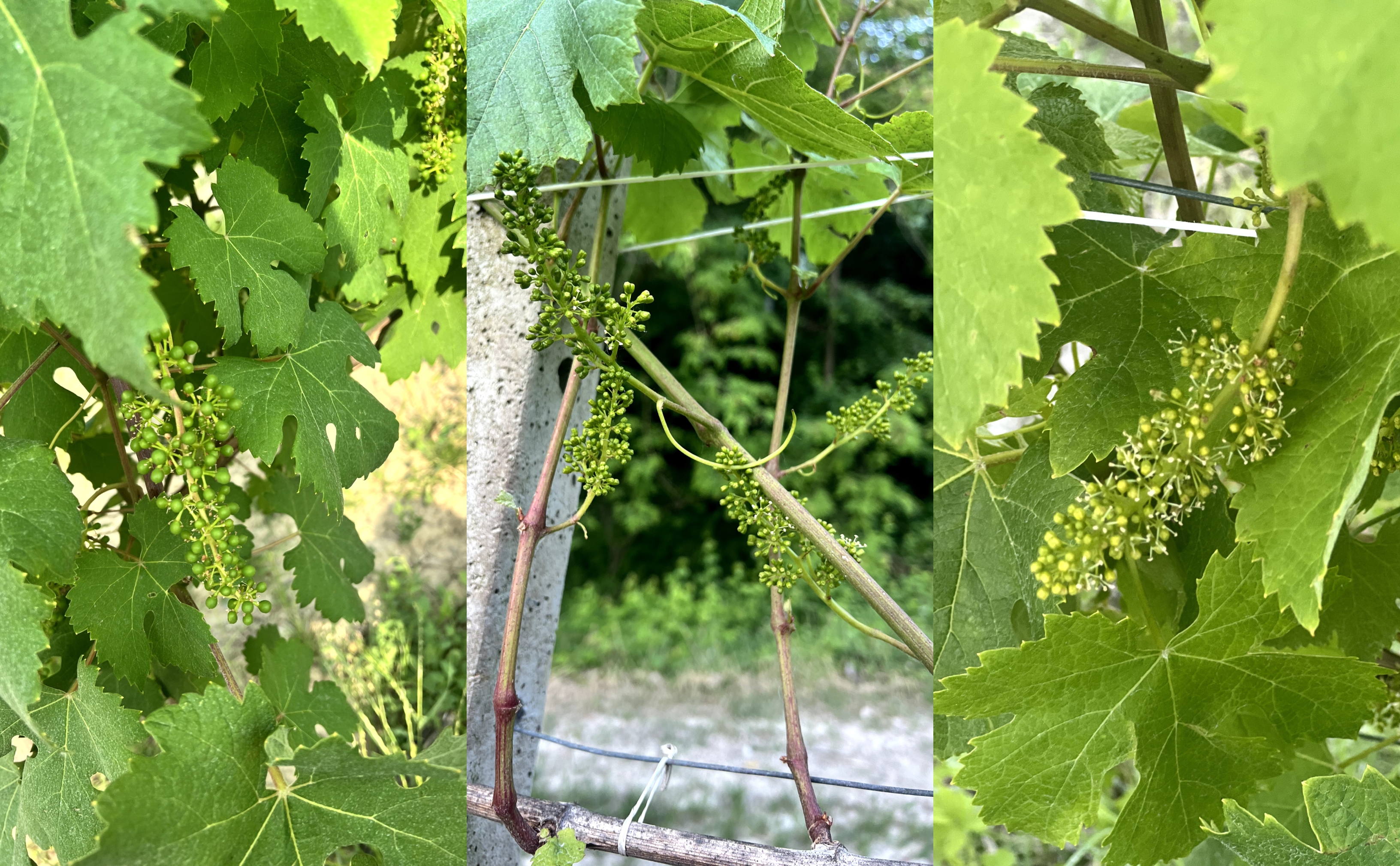
The summer
Likewise the summer arrived earlier than usual this year. From mid-May, warm, sunny days were ON and with temperatures already hitting 30°C by the end of May, as well as the thermometer steadily climbing to 35–36°C throughout both June and July, the heatwave may not have reached the extremes seen in other parts of Europe, however it was certainly also a factor during all the summer in Piemonte.
This threatened more stress in the vines, especially considering the stress that they had already endured in the past years; a very wet 2024, a hot 2023, and an exceptionally dry 2022.
Fortunately, this year the vines weren’t heavily impacted by drought, thanks to solid water reserves built up during the rainy spring. But aside from the heat, the theme of the 2025 season has undoubtedly been storms.
Never in my time here have I experienced a summer with so much lightning, thunder, torrential downpours, and hailstorms. Tropical conditions that kept producers on edge — about once a week, week after week.
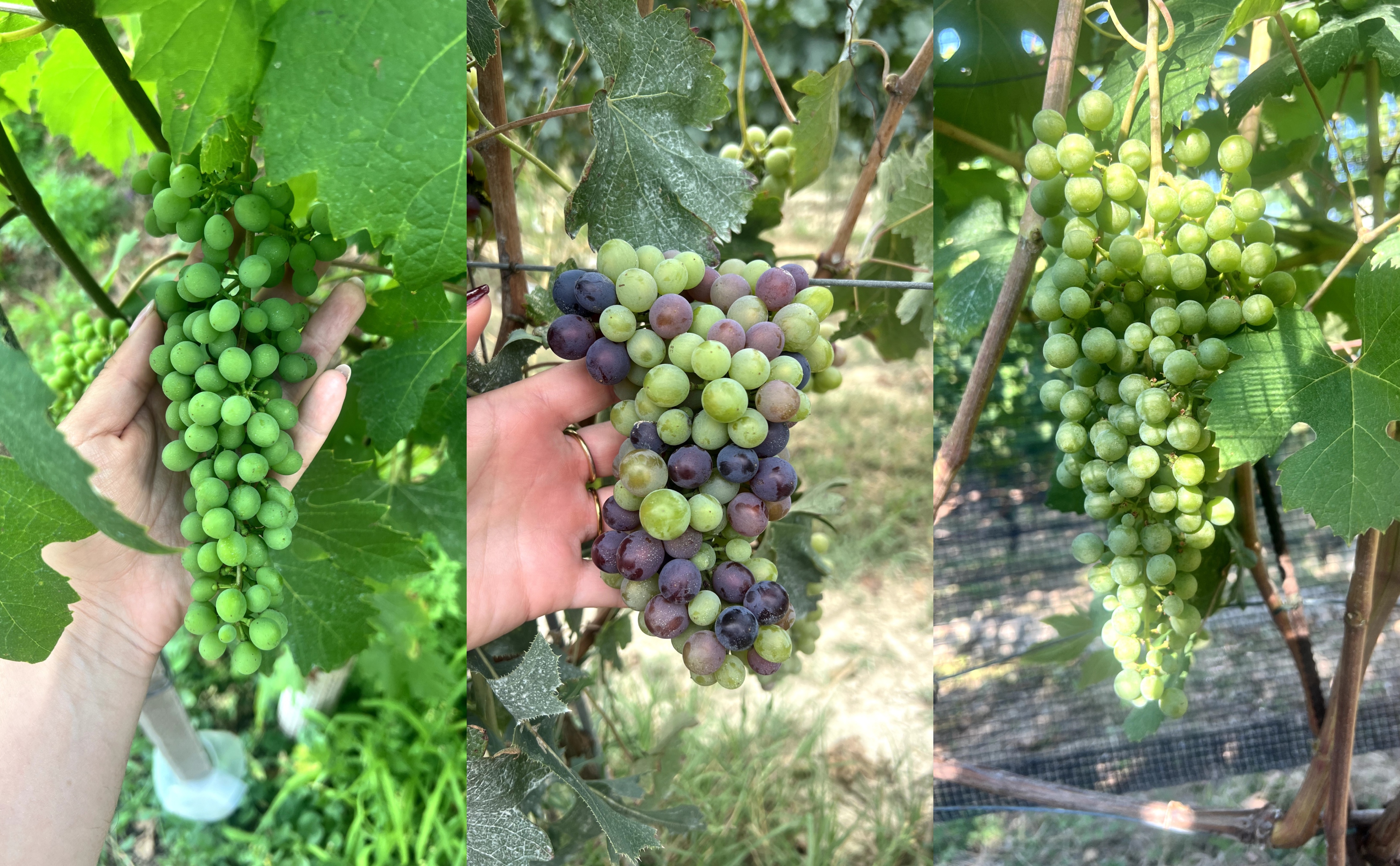
Pre-harvest
By August, it had become increasingly clear that predictions of an early harvest were going to hold true for many producers.
The sunny weather continued through the first three weeks of the month, and after several months of solid heat, ripening was already noticeably ahead of schedule.
However, towards the end of August, the weather took a sudden turn. Rain and cooler temperatures returned, putting unexpected pressure on the grapes. Concerns about botrytis quickly became a reality — although the issue was mostly concentrated in Roero.
In addition, grey rot began appearing in various areas as well, largely due to a significant increase in the presence of Tignola, a moth whose larvae pierce the grape skins, leaving them to rot from the inside. The increase of Tignola this year has become a widespread problem, and many growers are now expressing concern about the long-term outlook.
Altogether, these factors led to the unusual situation where the Nebbiolo harvest in some places overlapped with the traditionally earlier Barbera picking — something rarely seen in Piemonte.
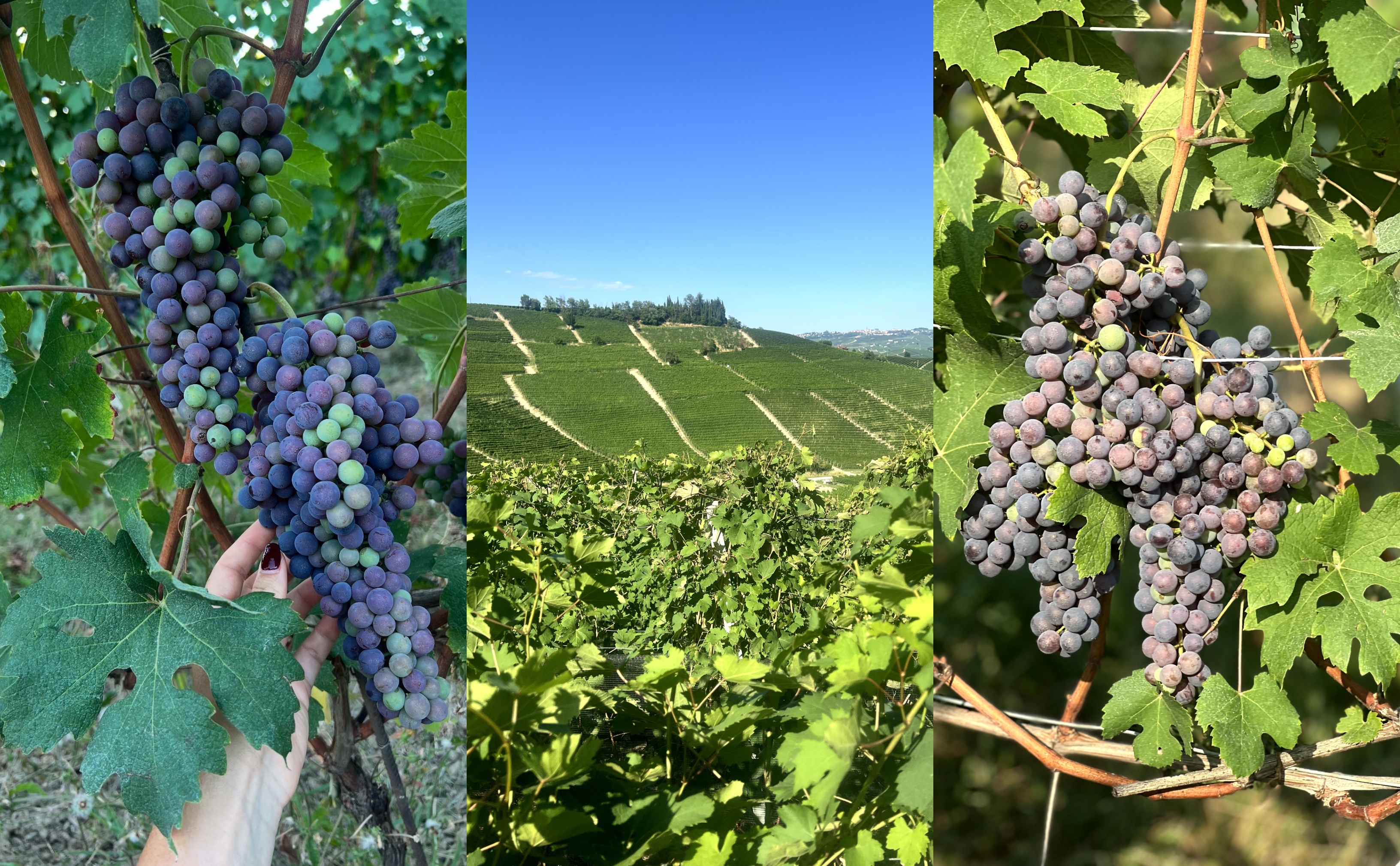
How did the harvest go?
Plukketidspunktet for Nebbiolo til Langhe Nebbiolo og dernæst Barolo og Barbaresco endte med at variere markant. I sidste ende stræk høstperioden sig faktisk over hele 16-18 dage.
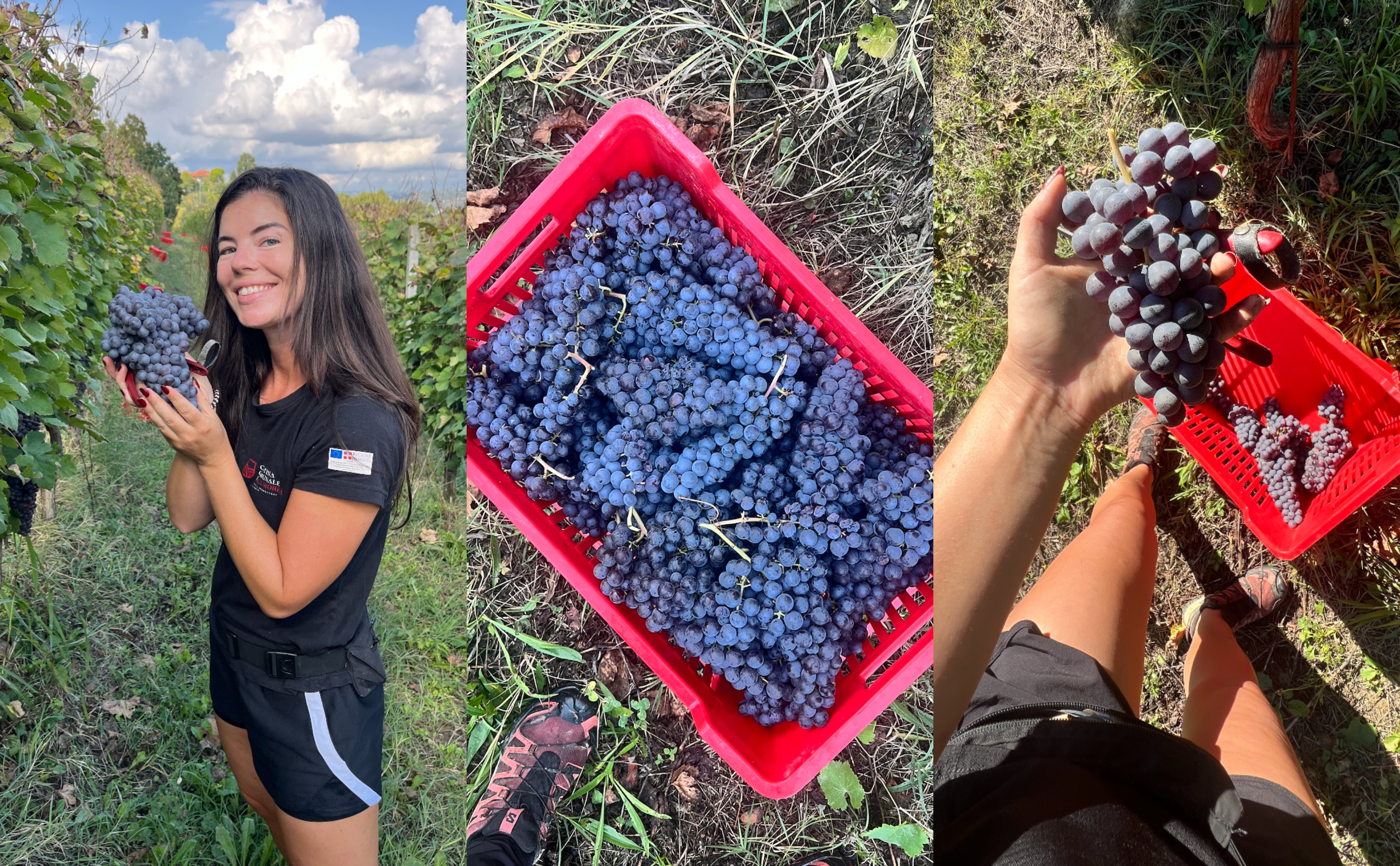
Already around September 20th - 22nd, tension rose rapidly, and many producers made the decision to bring in their grapes immediately, as weather forecasts were predicting heavy rain in the following days. Fortunately, the rainfall wasn’t nearly as intense as expected — and when sunny, stable weather returned sooner than anticipated, those who had taken the risk and waited could breathe a sigh of relief.
This shift in conditions meant the grapes were able to reach full phenolic ripeness calmly and gradually. What followed was an unexpectedly extended, yet highly successful and precise harvest for many producers — who, over a period of nearly two weeks, were able to monitor their vineyard plots closely and pick one by one at optimal ripeness.
The reason for this long picking period was largely due to the region’s diverse topography, with significant differences in altitude, sun exposure, and approaches to canopy management playing a key role.
All in all, 2025 is shaping up to be a highly successful vintage, with beautiful, healthy fruit reported across the various municipalities of Barolo and Barbaresco.
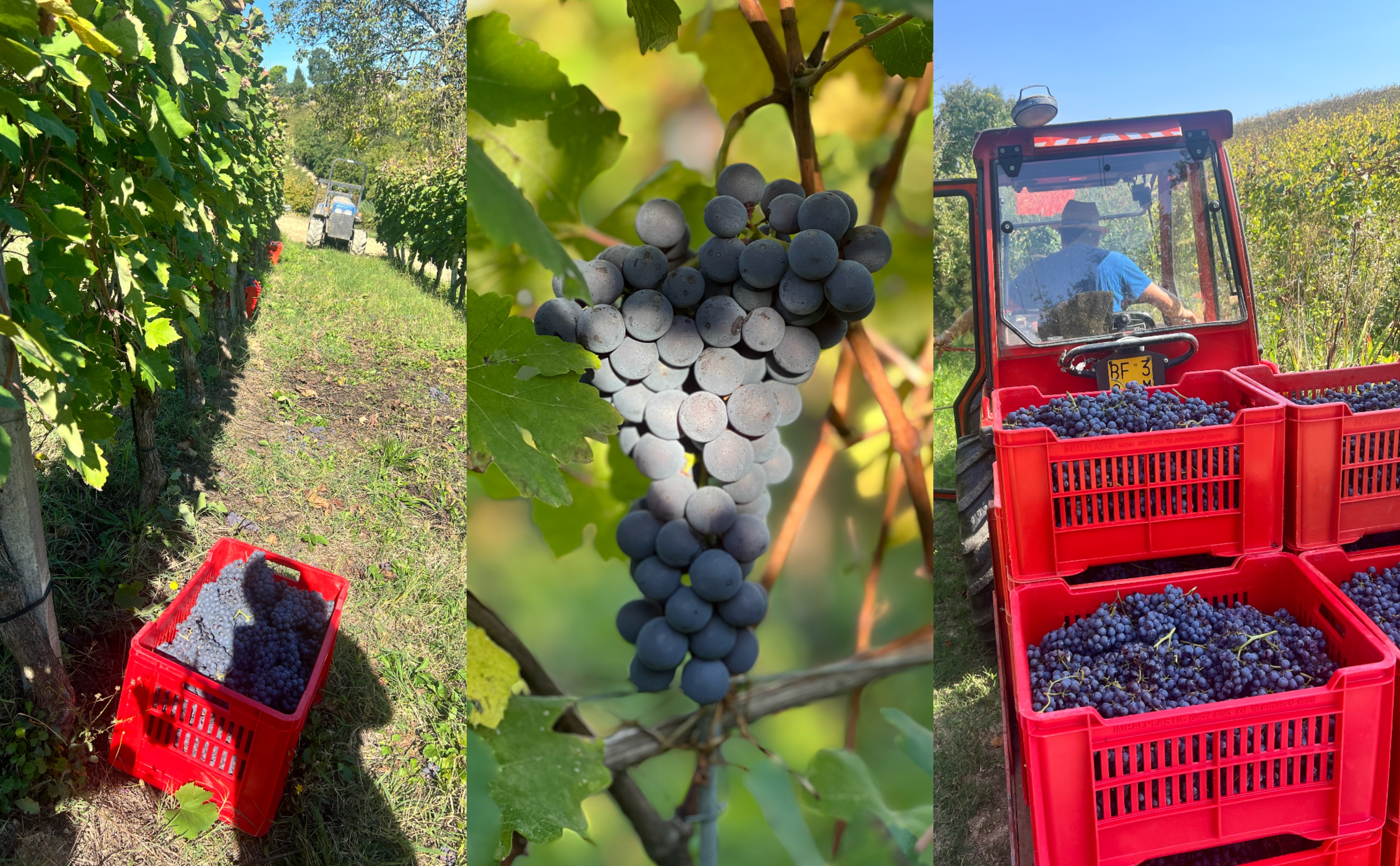
Expectations of the vintage
Quality and quantity rarely go hand in hand in the world of wine. Only in exceptional vintages do all factors come together perfectly. But for most vintages, a wide range of elements interrupt; overall climate changes, local weather conditions, conditions of the microclimate like vineyard specific diseases, and more.
Below, you’ll find my conclusion on both parameters of quality and quantity, based on what I have discovered in the vineyards and through countless conversations with producers.
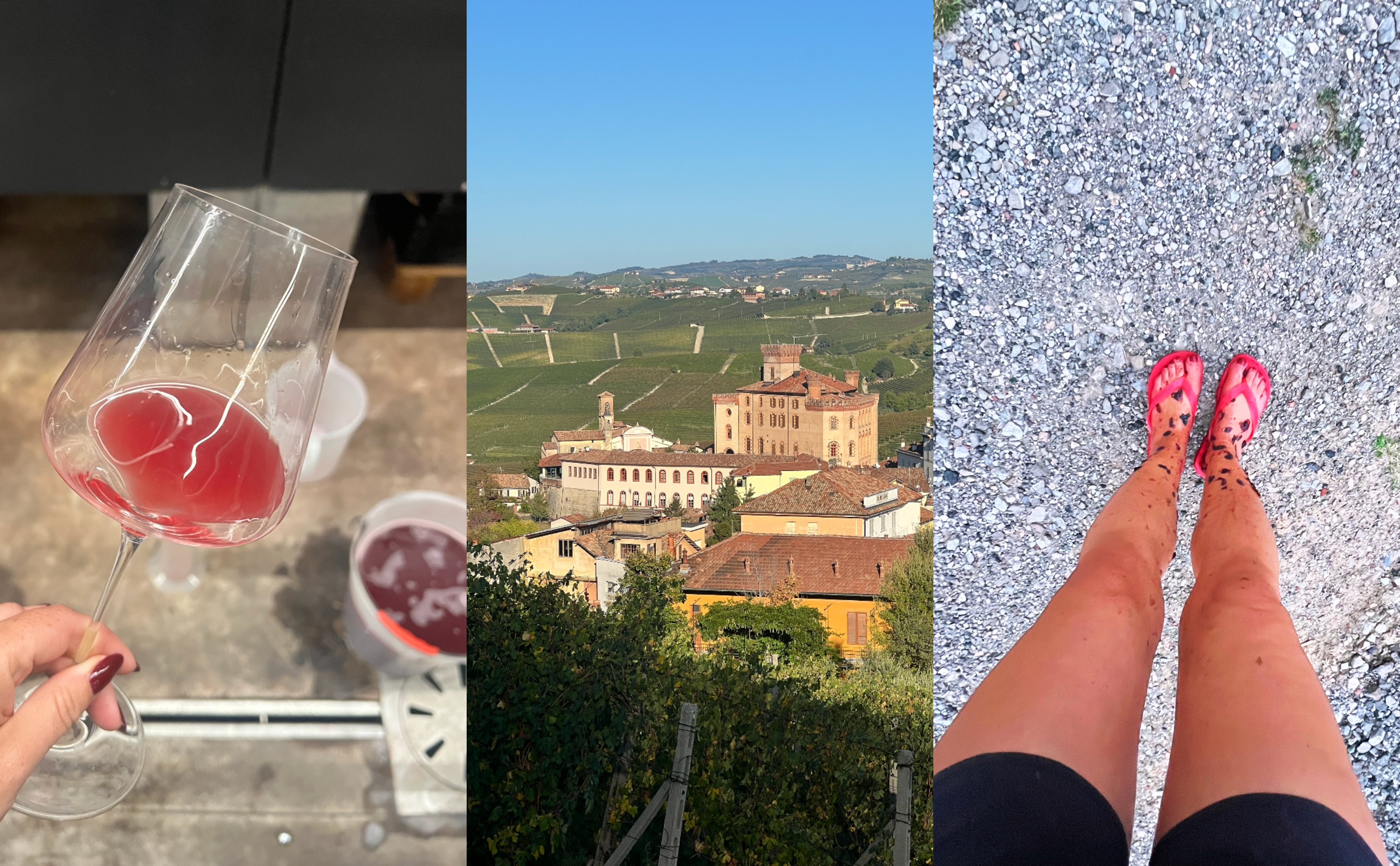
Quality
Quality-wise, the vintage ended up resulting surprisingly stunning. The season had its challenges, but despite the heat, there were no extreme +40°C temperatures or drought. And despite rainstorms and hail, losses occurred but not catastrophicly. In the end, weeks of mild, stable autumn weather provided perfect conditions to achieve very satisfying grape ripeness, with a good balance between sugar, acidity, color, and aromas.
The vintage will surely reflect the wide range in picking times. Some wines will predominantly showcase freshness and bright acidity, with a bit more bite in the tannins, while others will be more refined and show great maturity in both tannins, phenolics and thus aromatic compounds.
Now that the alcoholic fermentation has just finished across the cellars, it’s also clear that the general alcohol levels of 2025 will be moderate (ranging from just under 13% to 14%), which in my opinion is great news.
For collectors and wine enthusiasts, the 2025 vintage of Barolo and Barbaresco promises as a fairly classic and potentially impressive one in terms quality. A vintage I personally expect to appeal both to those who appreciate freshness and the primary fruit character of young wines, and to those who want to cellar bottles for further aging in years to come.
Quantity
Unfortunately, the promising quality forecasts do not repeat themselves when it comes to the yields this year. While the quality still has to prove itself in the cellar and later in the glass, we now know exactly how many liters ended up fermenting.
For many producers, the volume is lower than in 2024 — which can seem surprising, as last year’s challenges on the surface seemed more severe. This might surprise many, but when you add up the challenges with coulure and millerandage during flowering; meaning both significantly reduced and uneven fruit set, and combine that with the fact that faster ripening and thicker grape skins led to a generally lower “juice-to-skin” ratio per cluster, it makes sense why there overall was much less fruit per vine than normally. Ultimately, about 10–15% less juice has been pressed compared to last year.
This is a relatively low yield, but fortunately, the vast majority of Barolo and Barbaresco producers are very pleased with the quality, which after all is what matters the most following a whole year of hard work in the vineyards!
Piemonte Auction on Oct. 30th
The major annual themed auction, focusing especially on wines from Barolo and Barbaresco, is just around the corner! You can still list your bottles for sale, or get tempted by the extraordinary selection of bottles already listed for sale.